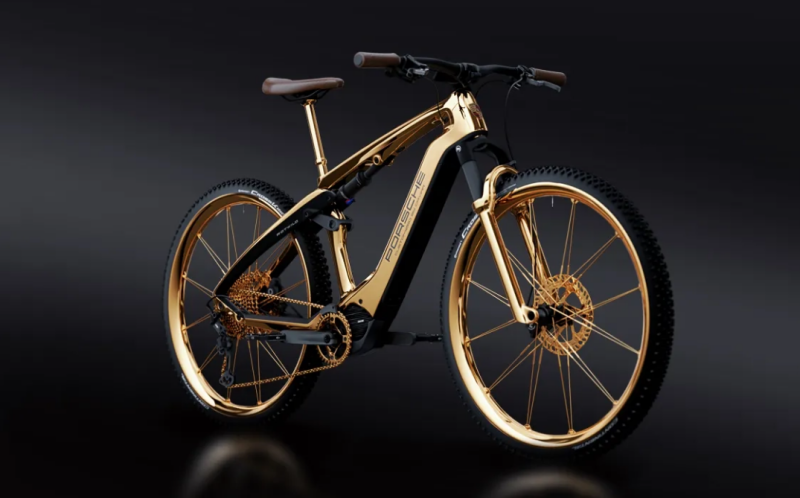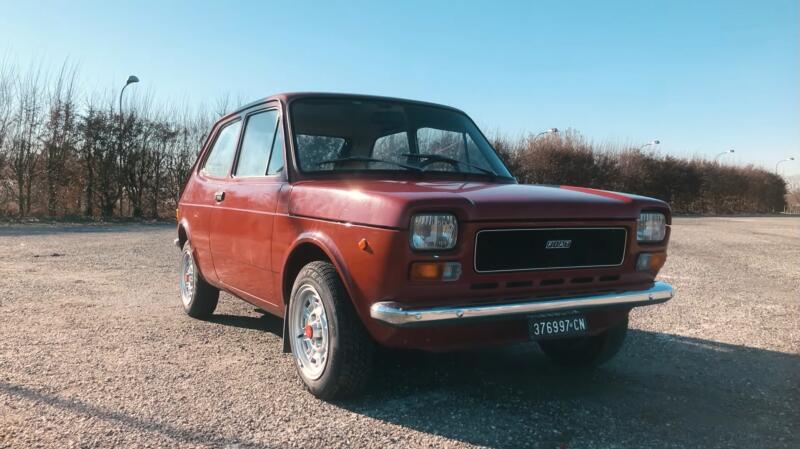Unlike the Czechs, who had basic enterprises, the Yugoslavs had to take advantage of foreign experience. Local officials went the way that was used earlier by the Poles, and later by the Soviet Union. They decided to create a joint venture to produce a licensed copy of various models of the Italian FIAT. In the first half of the 50s, preparatory work was carried out, the conclusion of bilateral agreements, reorientation and the construction of new facilities in the city of Kragujevac.
 Model "1100" of 1954 is one of the first developments of the company. Photo: youtube.com
Model "1100" of 1954 is one of the first developments of the company. Photo: youtube.comIn the middle of the decade, the production of cars started - a complete copy of the 127th model. Later, the 128th joined it. The oriented market for Yugoslav equipment, which began to roll off the assembly line in 1955, was the CMEA members and other states of Eastern Europe. Over time, the production capacity of the enterprise grew into a huge industrial conglomerate.
Yugoslav brand called Zastava
The new enterprise was named in the spirit of the time - Crvena Zastava. However, nothing surprising, in those days in the socialist environment, red was in trend. However, this did not affect the final name of automobile models. In order not to cause discomfort among customers from capitalist countries, the cars were simply called Zastava. They also entered the European market under the Yugo or Innocenti Koral brand.
The most powerful of the plant's small car line was the Zastava Yugo. True, 10 years later, the second part of the name was replaced by the more sonorous Koral. This subcompact car has experienced several dramatic changes in the political life of the country. Its release lasted almost three decades.
The model, which became one of the most massive and popular, appeared at the end of 1978. The thing was that a more modern compact model was needed to replace the outdated Zastava 750. She received a working index of 102, and FIAT 127 became the basis for her. But, if the inside was preserved, then the body was installed of the original design.
 Yugo Skala 128 1980. Photo: youtube.com
Yugo Skala 128 1980. Photo: youtube.comThe first experimental equipment that rolled off the assembly line was presented to the elderly leader of the country, Josip Broz Tito. The following year, experiments continued with different models of power plants. Among the ten prototypes made in 1979, the car with the original Italian engine was recognized as the most promising. Serial production was started a year later, when Tito was replaced at the helm of the country by Tsvietin Mijatovic.
Yugo/Koral gaining popularity in different countries
The FIAT-127 engine chosen as the main engine influenced the final index of the model. The name Zastava-102 did not come to court, so the creators announced a competition for a commercial name for the novelty. The name Jugo won. The index "45" added to it reflected the power of the base 900 cc engine. By the end of 1980, they managed to assemble only 36 copies of the new car, but already in the next production volumes increased markedly. The increase in production rates went on year by year:
✅ 1981 - 9715 cars
✅ 1982 - 14414 copies
✅ 1983 - 22738 cars
The turning point in the history of the model came in 1983. Then there was a modification with a more powerful, 55-horsepower engine. In the same year, for the first time, the car was exported to non-socialist countries: Great Britain and Holland. Therefore, I had to carry out a marketing ploy by changing the first letter in the name from “J” to “Y”. Over time, the geography of exports has increased markedly.
The expansion of the American open spaces started in 1985 and progressed very successfully. To linger on this profitable, but very demanding market, the Yugoslavs had to pretty "sweat". Changes were constantly made to the basic design of export models:
✅ improvement of interior decoration
✅ equipment expansion
✅ more powerful engines
✅ different lighting configuration
It is quite natural that the market with the possibility of receiving foreign exchange deductions was a priority. Therefore, only two modifications with the previously mentioned power plants remained for domestic buyers. On the contrary, for American buyers, over time, new items with more powerful engines (60 and 65 hp) appeared.
Technical features and parameters of Zastava Koral
While the car was sent to the domestic market or neighboring countries, manufacturers did not bother much. There was a 45-horsepower carbureted engine, which made it possible to reach speeds of up to 135 km / h or a more powerful 55-horsepower one, with a maximum speed of 145 km / h.
 In a 2-door saloon, you can only sit in the back row like this. Photo: youtube.com
In a 2-door saloon, you can only sit in the back row like this. Photo: youtube.comThe markets of the capitalist countries demanded not only more powerful, but also modern power plants. At first it was fuel injection for the American version of the 1300 cc engine. cm and a capacity of 65 liters. With. A little later, Yugo GVX-EFI appeared with the same displacement, but already with electronic fuel supply. They were developed for the company by the West German Bosch, using Bosal converters.
By the end of the decade, Yugoslav cars were being exported to many countries on three continents: Europe and North and South America. Despite the peak of popularity, the company decided to carry out a double rebranding. The Zastava brand name replaces the now world-famous model name, Yugo. In turn, he is replaced by Koral and Skala. This happened in 1988, and the next 3 years were the best in terms of quality and quantity in the history of the brand.
In appearance, the Yugoslav small car was a 3-door hatchback, angular shapes typical of that time. Ultimately, the range of power plants used for the car reached five varieties:
✅ 0,9-liter with 4-speed gearbox
✅ 1,1-liter with 5-speed gearbox
✅ 1,1-liter with 4-speed gearbox
✅ 1.3-liter with 5-speed gearbox
✅ 1,3-liter (special for the US market) with a 5-speed gearbox
In all cases it was "mechanics". The only exceptions were the most powerful engines. To them, as an alternative, 3-speed automatics were also offered. Their top speed ranged from 135 to 155 km/h.
War and other issues leading to the end of production
In the last 3 years, at the turn of the decades, the best quality cars have appeared. Even after a couple of decades of operation, they had no traces of rust on the body. There were no upholstery problems or major engine problems. All this testified to the good quality control of products at the plant in those days.
 Under the hood of Zastava Koral. Photo: youtube.com
Under the hood of Zastava Koral. Photo: youtube.comThe peak of production (almost 200 thousand cars per year) occurred in 1989. At the same time, an original modification for the European market appeared - Cabrio (in Italy it was called Innocenti Koral). But the popularity of the brand in the United States began to decline rapidly. For 7 years of sales, 141651 Yugoslav-made cars arrived in this country. However, the political situation in the world led to the termination of trade relations between the countries.
The large European redistribution of borders and the parade of sovereignties of the early 90s greatly affected the multinational country. Suddenly, all the Yugoslav republics that were part of the federation wanted to further develop independently. It was not possible to peacefully divide the territory and for many years the country plunged into a civil war. One of its consequences was the disruption of the supply of components from other republics (now independent states). In addition, sanctions were imposed on the remnants of the country. The bombing of Serbia by NATO forces brought additional problems to the plant.
During these years, the production of cars was random, and the equipment was chaotic. It even reached the seats in the cabin, which have different colors. Compared to 1989, production has decreased by 10-15 times. It was fully completed in 2005. For all the years of production, more than 794,4 thousand cars were produced.
 Florida 1991 for the USA, and remained a concept car. Photo: youtube.com
Florida 1991 for the USA, and remained a concept car. Photo: youtube.comThe most interesting thing happened two years later. American Time called the 1985 GV one of the worst ever. Perhaps this is not surprising. After all, Zastava Koral at one time was the only representative from the socialist camp in the US market.
In December 2007, the authorities of the Serbian Republic officially announced the impending sale of Zastava. The last car of this brand, released in November 2008, was solemnly presented to the factory museum. So the history of the Yugoslav subcompact was completed.










